96 vocal production tips
A host of invaluable vox advice
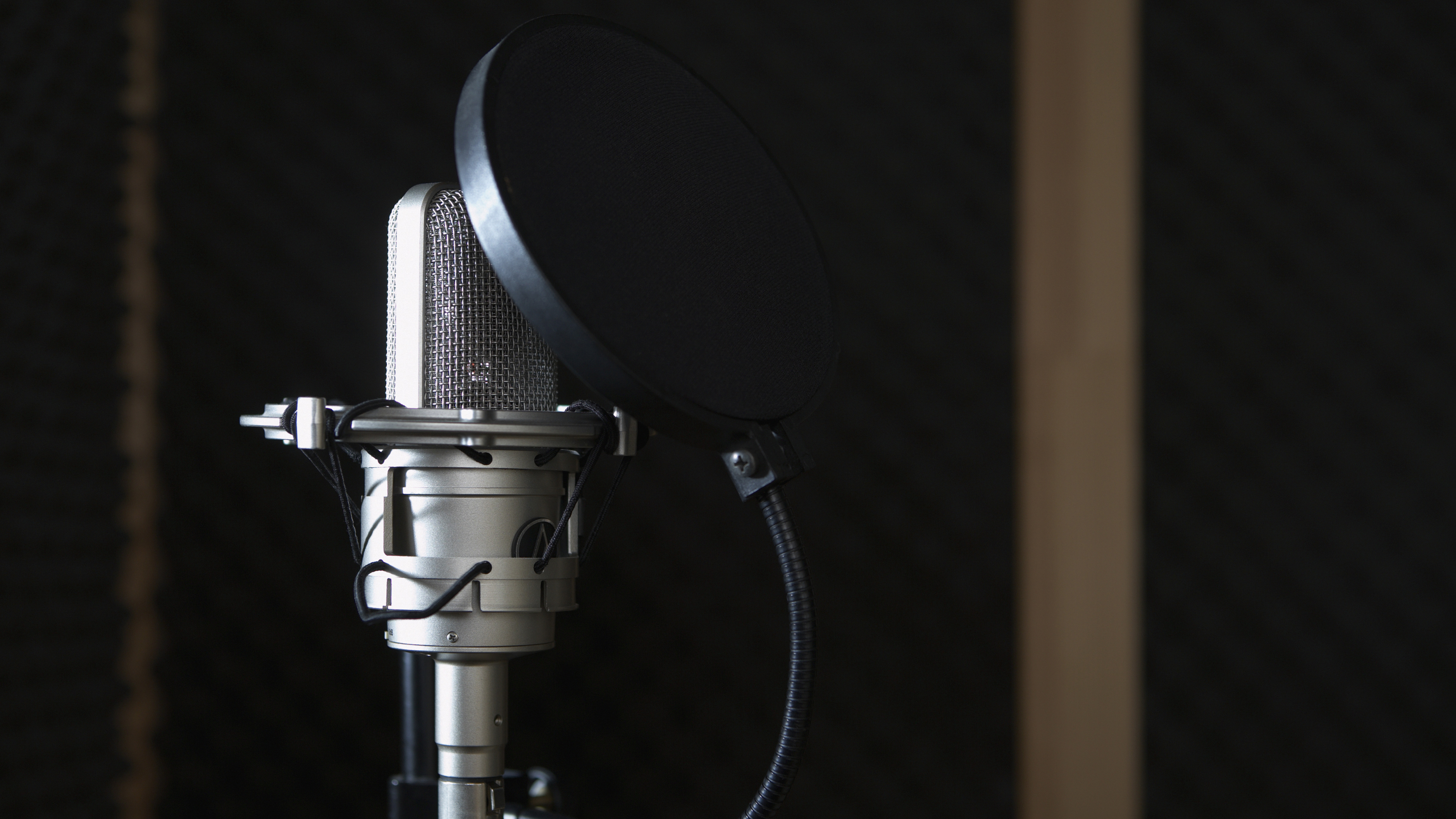
01
We generally recommend that if you're aiming for really pro-sounding vocals it's easier to have a real preamp on the go, keeping good signal levels on the way in. If you haven't got access to one of these, however, you can always try throwing in something that provides the same sort of flavour. Plug-ins such as PSP's Mix Saturator 2 offer some handy preamp settings that quite convincingly mimic outboard saturation and compression.
02
It's vital to get the best mic position for your vocalist. While it's usually best to start from right in front of the mic, some people's voices may sound better a little closer or further away, or even to the side. If your singer's voice has a nasal quality, for example, you might want to place the mic slightly above their nose rather than in front of or below it. Experiment until you find the sweet spot.
03
Many vocalists sing better when they tilt their head back a little, as it opens up their vocal chords. The easiest way to take advantage of this is to place the mic slightly higher than the singer's mouth, angled down towards them - this will encourage them to tilt their head back as they sing.
04
It might sound a little obvious, but before doing a vocal take, it's a good idea to make sure your singer has a clear idea of where the lines should be placed. There's nothing wrong with having them scribbled down on a piece of paper, but generally speaking, a singer who doesn't know the lyrics probably isn't that sure how to sing them either.
05
Make sure you keep track of your singer's position (even if your singer is you). You will often find yourself taking breaks, or coming back to re-record a line, and it's very important to make sure the vocals are coming from the same position each time - if not, they might not sound the same. It goes without saying that you should keep track of where the mic was, too.

Artificial stereo spread effects can push a vocal back in the mix, so try to keep them for backing or quieter layered vocals.
06
Adding an artificial stereo spread effect to a vocal can be a great way of giving it real presence, but it also has the effect of taking away some of the vocal's punch and causing it to lose some of its prominence in a mix, so is often not ideal on the lead vocal. Instead, try using it for backing vocals or layered words, or for specific effect on certain words.
Want all the hottest music and gear news, reviews, deals, features and more, direct to your inbox? Sign up here.
07
Chorus effects are great, but one of the best ways to achieve chorusing is to actually record multiple takes of the vocal. You can then take a few of these and layer them - try panning a couple slightly and leaving one centred, or thinning out the underlying two a little with EQ and more heavily compressing the central one for added impact.
08
You can thicken up a thin-sounding vocal by using a synth layered underneath it that subtly plays the same notes. You can even use a sidechained gate on the synth, triggered by the vocal, to ensure they only play together. Alternatively, try using something like Waves Tune, which will export the notes of your vocal as a MIDI file. Then compress the synth and vocal as one.
09
There are plug-ins out there, like Antares Punch, which are designed to accentuate the more punchy parts of a vocal, but you can also achieve something similar using gating or even an expander on your compressor. With a gate, for example, you just need to set it up so that only the punchy parts of your vocal open the gate, and then apply a small amount of gain reduction.
10
One of the great ways to keep a vocal punchy but still interesting is to use some of your additional takes to layer key words. These could be words that are significant in a lyrical sense, or that work well with the groove, or that enhance the arrangement. Just be sure not to overdo it - use them sparingly enough that they keep their impact when they appear.
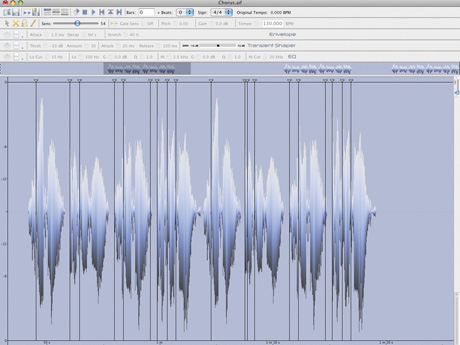
Try chopping your vocal up and loading the parts into a sampler, then applying some groove quantise to them.
11
We often talk about adding groove quantise to musical and rhythmic parts, but it can also be very effective on a vocal line. How you do this is up to you - Live users might try putting warp markers on the individual words of the track and then applying quantise, but we like putting the vocal in a sampler so the quantise can affect the length of the words as well as their placement.
12
A vocal line can sound a little jarring when it first appears, so try introducing it by taking the first word, reversing it and playing it into the normal version. You can use this effect anywhere, in fact - and don't forget that you can also timestretch the length of the reversed part to fit the space. Reverse reverb within your vocal can have a similar effect.
13
Once you've spent ages carefully ridding your vocal track of background hum, the cha-chinks of ice in a glass, coughs, comments and all the other bits of assorted noise that you only notice on a vocal track once it's been pumped with compression, it's often easy to forget how cool some of them can sound when sequenced into your track. Try it!
14
The easiest way to get rid of breath noise is to use a gate. You want to set it up very carefully to make sure you aren't losing any important parts of the words - a useful rule of thumb is to keep your attack and release times relatively slow. When in doubt, take it easy and manually remove any problem parts. There are de-breathing plug-ins that can help, too.
15
Breath noise can be problematic, but it's also vital on some vocals - completely removing it can make a vocal sound artificial and over-processed. Sometimes the words and breaths will slide between each other, so make sure you set any gain reduction carefully to leave some of the vocal in the track.
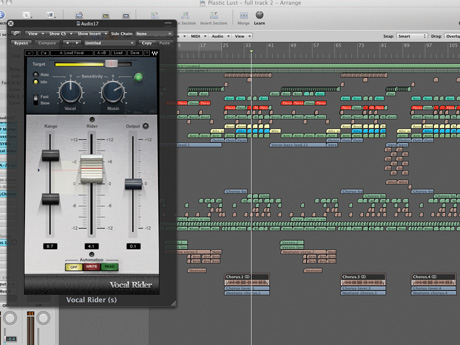
Whether manually or with a plug-in like Vocal Rider, try using old-fashioned volume controls to balance your vocal.
16
We often tell you to compress a vocal to achieve a balanced level, but before you do that, you want to ensure that the volume is level too. What's the difference? Well, compressing squashes the signal and makes it more powerful, but it also changes the overall character of the sound. Try riding the fader manually, changing the levels of individual word clips or using something like Waves' Vocal Rider to achieve a more natural-sounding result.
17
When recording a vocal, have your lyrics written out on a sheet and have three different- coloured pens to hand. When the vocalist sings a part of the vocal right, draw a line through that part with a pen. When they sing the same part well again on a subsequent take, strike the part through with a different colour. Don't stop recording until you have all three colours through every line!
18
Sometimes when you're on a deadline, have been looking forward to recording a vocal or have been planning it for ages, you might be tempted to go ahead with a recording even if your singer has a cold or otherwise isn't in the best condition. Check with the vocalist first - they know their voice, and they'll be able to make the best assessment of whether they're up to the job. Singing with a cold or sore throat is at best pointless, and at worst harmful. You'll all get frustrated, and waste your time.
19
We think it's always worth trying a vocal in a different key, just to see how it sounds. It can be very easy to get stuck in your ways, but it only takes a minute to sing a line in a different key. You might decide it sounds horrible, but you could also be pleasantly surprised. You might even decide to put a cheesy (sorry, 'epic') key change in the track.
20
You can add a lot of extra excitement to key bars or phrases in your track by adding some panning effects. This works on anything, but with vocals, it's ideal used on backing vocals or double-tracked words. The strength and speed of the panning are entirely up to you, but one thing that's often worth doing is softening the extremity of the pan.
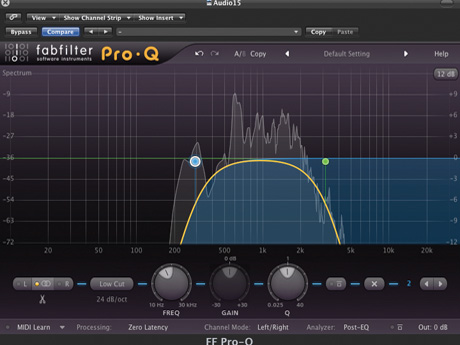
Applying a little creative processing on key lines of a vocal is a great way to add emphasis and effect.
21
A lot of vocal processing is about achieving a consistent sound throughout, but that doesn't mean you can't accentuate some key lines. Try using some extreme processing - for example, you can put one phrase through an EQ and make it sound like it's coming down a phone line (cut below 300Hz and above 3kHz), to make it stand out.
22
To make a vocal sound more intimate, use very strong compression. The sounds you are trying to pull out are the breath and mouth noise of your vocal, as these are the sounds we associate with somebody speaking very close to our ears. With this in mind, it's also a good idea to keep your vocals quite dry too, for a more natural sound.
23
Remember that your vocal is usually not just another part of your track - it is your track. There will be musical elements that people like, and riffs that people love, but it's best to treat your vocal as the hook in almost every instance, as that is quite simply how most other people will view it.
24
Processing is great for adding emphasis to a vocal, but you can add interest by using some real gear too. For example, try recording a version of your vocal into an iPhone (you can set this up to run at the same time as you're capturing the vocal with a proper mic), or you might consider recording through a megaphone or guitar amp.
25
Try capturing vocals in different places. Generally dry is good, but if you have a great echoing hallway, or even a roof or a field… why not? When recording outside your main enemy will be wind, so you'll need either wind baffles or a foam cover, but if you want a completely dry vocal, free from reverb and reflection, it's hard to beat the middle of a field on a misty morning!
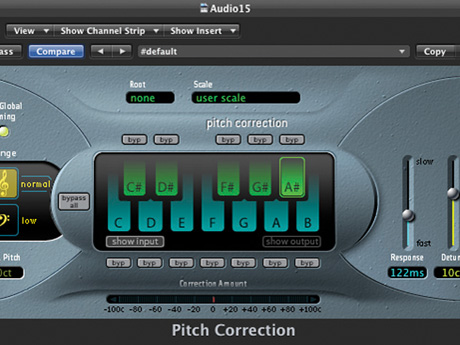
Singing slightly flat is a common problem among vocalists, so we often pitchshift the whole part up a few cents.
26
Most vocalists you are likely to encounter will sing a little flat rather than sharp, and this can often sound quite noticeable and unpleasant. One quick fix for a lot of vocal parts is simply to nudge the whole thing up by 5 to 25 cents. You'll be amazed how many vocals this will help.
27
Try different mics, if you have them, including cheap and old ones. Obviously if you're capturing an opera singer's voice, this could be considered something of a waste of their gift, but sometimes the character and flaws of the mic can really add something, even if only used as a layering effect.
28
While it is true that you can get awesome results with a relatively cheap microphone, good singers deserve a decent mic, and one that suits them. If you have access to a few different mics, try them out on different singers and you'll often hear little plosives or mouth noises that aren't audible on other mics. When aiming for expensive-sounding vocals, get a mic that suits your singer.
29
With automation available on almost everything in the studio now, it's incredibly easy to become a control freak with delay and other processing - so go for it! We like adding some delay to a few key words or parts of our vocal to create excitement. It can work with reverb and other effects too - and for added impact, try those effects on a bus and add an auto-panner.
30
Vocoded vocals can be quite hard to make intelligible. There are any number of more modern plug-ins out there now that are designed to make things clearer, and they usually do a great job, but it can still be really useful to ask your vocalist to enunciate clearly and to try to put some unnatural emphasis on the plosives and individual syllables.
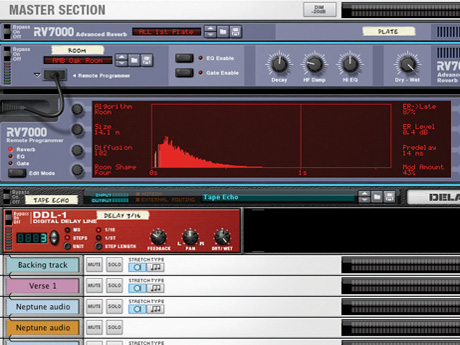
Giving your vocalist a little reverb in their headphones will help them tell whether they are singing in key.
31
You should always try to give your singer some reverb in their cans while they're singing (unless they don't want it). The idea Giving your vocalist a little reverb in their headphones will help them tell whether they are singing in key is to keep their confidence high by giving them a good impression of their own voice, and to give them something they can pitch to. Your vocalist can't listen and sing at the same time - at least, not like the engineer can listen - but with reverb, they can hear the pitch.
32
If you have the opportunity, and know you are working with a great singer, leave the mic running while they warm up (after checking with them that it's OK to do so). You could strike gold, even if you only catch a little phrase to drop in at the start of a track (think Amy Winehouse). Failing that, you might get some great archive material to use when VH1 run a special show to commemorate the 30th anniversary of your first album…
33
For a thicker vocal sound, don't just add reverb and delay on busses. Try adding them directly to the channel and then following that with some compression to really pull the elements together. Slap-back delay (with very fast delay times) is a perfect candidate for this kind of thing. It's also important to keep release and feedback times short to avoid making a mess.
34
You should try to have one set of headphones for the singer, and another set for you to listen out for any problems on the recording. It's far too easy, when you're just listening to a singer without cans, to miss a little bump from a ring or button on the mic stand that can completely ruin a recorded phrase.
35
No matter how carefully you've set your initial input level, singers will sometimes stray into louder territory than you planned, so even if you've tested their loudest note and left ample headroom, keep a stern eye on the incoming level to watch for clipping.

Grouping vocals helps pull different takes together and makes it easier to create separation between sections.
36
It's usually worth grouping the various parts of your vocal track so that you have one group (or channel) for the lead vox, one for doubled words and breath effects and one for the backing vocals, and then adding compression. This will pull all the vocal parts together nicely and make them seem more coherent, and will make it easier for the listener to differentiate the vocals from other elements of the track.
37
Generally speaking, the place for a vocal is in the centre of a mix. It sounds obvious, but listen to almost any great rock or pop recording and you'll hear that while the instruments might be dotted all over the place, the vocals are usually centred, and it's no accident. The vocal is normally the key element, and centring it makes it, well, central. We're also used to people speaking to us from the front, so it feels more personal.
38
Be very wary of anything that makes noise when recording. Even quiet noise will be amplified, including the slightest rustle of paper - this is why it's handy for the vocalist to have the lyrics memorised. Other culprits include rattling bracelets, necklaces and change or keys in pockets. Get rid of them before you start!
39
It's a good idea to always have a dictaphone or similar portable recording device ready. You never know when inspiration might strike, and even in a studio full of equipment, nothing quite beats the immediacy of hitting one button for instant recording. It can be digital, analogue… anything! They key is having instant, reliable recording at the touch of a button.
40
Although various kinds of, ahem, stimulants have been considered beneficial to the creative process by many a great musician, generally speaking, people sing better sober. Stick to a nice cup of tea - it will warm the singer's throat and wake them up. Try to steer clear of milk, though, as it acts as a coagulant in the throat and can have a really adverse effect on a singer's voice.
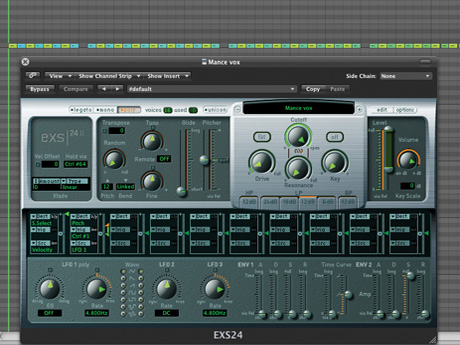
Chopped-up vocals will almost always sound better with a little octave-wide pitchshifting on individual words.
41
When chopping up parts of your vocal line and pitchshifting them, it's often hard to know where to begin. A good place to start is shifting an octave up. Alternatively, play a scale and pick notes that work in quick sequence. And whenever you repeat a syllable or vocal noise a few times, try shifting one up or down an octave. Experiment with the pitchbend, too.
42
It's usually worth grouping the various parts of your vocal track so that you have one group (or channel) for the lead vox, one for doubled words and breath effects and one for the backing vocals, and then adding compression. This will pull all the vocal parts together nicely and make them seem more coherent, and will make it easier for the listener to differentiate the vocals from other elements of the track.
43
One of the best ways to get vocals to cut through a mix is to use sidechain compression on competing musical parts. Instead of turning up the vocal, insert a compressor on the competing parts and let your vocal control the sidechain to duck the music. Don't overdo it - you shouldn't hear the music pump, but with careful attack and release times your vocal will magically appear in the mix.
44
One of the most common sources of noise on a vocal recording is the backing track itself, bleeding out of the headphones. One simple way to avoid this is to use closed over-the-ear headphones. If your singer likes to have only one cup over their ear, try panning the headphone signal so it's not bleeding into the mic.
45
If you don't have access to a singer but need to get a vocal down, you could try using a voice-altering plug-in, speech box or vocoder and recording your own version. You might be pleasantly surprised at how often you can come up with interesting, if classically imperfect, results.
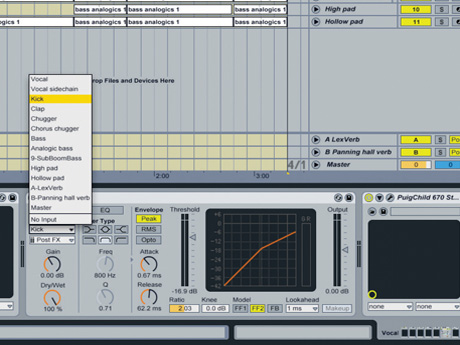
Sidechain compression can be used to help individual words or phrases cut through the main vocal.
46
Sidechaining isn't just a good way to get your vocal to cut through a mix, it's also a good way to get a vocal to cut through… your other vocals. You might want, for example, one bit of backing vocal - or perhaps a bit of a spoken word or vocal noodling - to cut through. Apply a sidechain-enabled compressor to your main vocal group, and then use the one you want to stand out to duck it (just make sure it's not in the same group, ducking itself!).
47
We've all been here before: you're comping and editing a vocal, and you realise you haven't followed your own advice about keeping track of the vocal takes to make sure you've got a decent version of every line. So you're tweaking away, trying to get that one word to sound right. Stop. Call the singer and ask if they can either come into the studio to redo it, or record a new take and send it over.
48
When writing a song, get a guide vocal down as soon as possible - it needn't be the definitive take, but it will help you get on with constructing the whole song, which will provide you with clues about how to handle your vocals. Quite often, though, you'll capture something nice and raw - it's surprising how often a rough take becomes the final version.
49
Break up your vocal by using a doubled layer at the end of every verse or half-verse. If you've already double-tracked your vocals, this will mean adding another layer - one of the reasons why we suggest always getting at least three takes of a vocal. When recording, try getting a whole take sung as a harmony, ready to place wherever you need it.
50
This tip may raise the ire of the traditional songwriters out there, but in this day and age, the chorus of your song doesn't need to sound that great in its raw form. Modern music (pop, soundtrack and club alike) is replete with examples of pedestrian phrases or words that have been made into a chorus by being chopped, processed and generally mucked about with. So if you have a great verse but can't nail that chorus, just record anything and play around with it. After all, what have you got to lose?
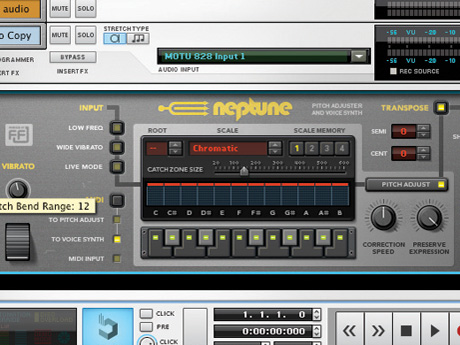
If you've chopped up your vocal and loaded it into a sampler, try applying some octave-wide pitchbend.
51
Whenever you're using chopped-up, pitch-effected vocals, it's always worth trying a bit of pitchbend action, particularly on held notes. Set the pitchbend range to 12 semitones, play the vocal back and sweep it up and down. Naturally, for this to work, you need a very powerful Auto-Tune-style device, or to chop up the phrase into individual words in a sampler - and of course, there's nothing to stop you using both!
52
Auto-tuning devices are powerful tools, and they're also very versatile. If you tend to work with very fast response time settings, try making them slower for a natural effect. If you normally go slow, try some faster, T-Pain-style changes. And don't forget that you can automate the effects throughout the track. Sometimes, less is more.
53
When asking your singer to do double takes of a vocal, it's worth having at least one running in the background as a guide - otherwise, if you decide to layer them, the differences in timing can make the vocals sound disjointed. Plug-in tools such as VocALign can do a great job of matching the timing of vocals, but it's always easier to get it right from the start.
54
If you want some variation on your backing vocals but only have one singer, try doing them yourself. Usually even the most tone-deaf person can sing monotone, and you'll be amazed how much a monotone version of a vocal, on the root note of each passage, can thicken up and add interest to a vocal part.
55
It's great to take chances and experiment, but if you're going for a specific type of track, chances are there will be a specific type of processing that goes best with it. Spend a bit of time listening to the types of effects that are used in comparable tracks - don't just use the same old effects on every vocal.
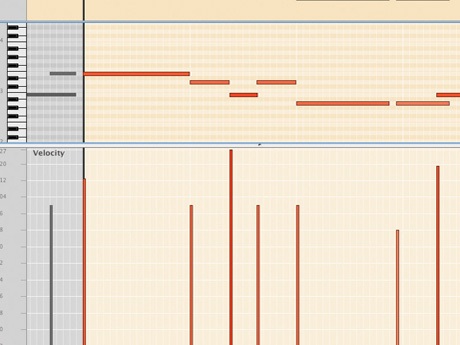
When using voice synths for harmonies, keep things simple to avoid an voerly Kraftwerk-like vocal sound.
56
When using harmonising plug-ins such as Neptune's voice synthesizer, it's usually best just to use one note at a time for energetic pop. Playing chords will have the effect of making your track sound like a choir or acapella group, or like an old Kraftwerk-style vocoded vocal. Single-note harmonies sound like reinforcing backing vocals.
57
If you haven't got many backing vocals - or sometimes even if you do - it's often worth finding one key word or phrase that you can repeat. Ideally this will have some resonance with the rest of the song, but it needn't. The key is to make sure it sounds punchy and catchy. More often than not, you'll find that this is the listener's favourite bit.
58
When processing your vocals, it's tempting to bounce them down with the de-essing and breath removal effects applied, just to save some CPU cycles. Fair enough, but keep in mind that you might want to change these later, as when other effects such as compression and EQ are applied, they might disappear or get accentuated further. Wait until you're sure before doing anything that you can't undo.
59
Sometimes a singer just isn't in the mood. Learn to recognise the signs, and suggest a break or a rain check. Don't get us wrong - if your singer spends more time sulking than singing then it might be time to look elsewhere, but vocalists can often be quite highly strung (it takes a certain type of person to get on stage and sing), so it helps if you know how to placate them..
60
If you're using any kind of Auto-Tune/Neptune-esque device, keep an eye out for a vibrato control. Subtle amounts will sound natural, heavy amounts not so much, but either one can sound fantastic if used in the right way and the right context. As with all types of processing, we suggest trying automation to switch it on and off in different places.
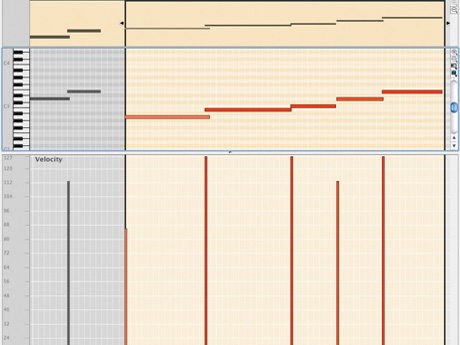
Add some excitement to a track by using ascending harmonies and a harmonising device like Record's Neptune.
61
A great way to get anticipation and excitement to a build in a track - when moving from verse to chorus, for example - is to layer some ascending harmonies. Pick a good harmony note, then while the main vocal stays on one level, take the harmonies up in musically fitting increments (these will depend on the track, of course). If your chorus is in a different key, try making your last harmony note meet the root note of the chorus.
62
Pay careful attention to the order of your effects. It seems obvious, but if you have a compressor before a de-esser or a breath removal plug-in, it will make it much harder for that plug-in to distinguish what is meant to be there and what isn't. This is particularly important when dealing with plug-ins that rely on dynamics, but it applies to all effects.
63
Sometimes the oldest tricks are the best, and slap-back delay has been around for quite a while. Use a very small delay time, with no feedback, and you'll get a thickening sound that's reminiscent of the best of The Beatles. Unlike a lot of vocal effects, this can often be used on the main vocal without it losing its grounding and punch.
64
As an alternative to thickening your vocal track by layering on another sound and treating them as one, try playing a musical riff that follows your vocal. It needn't be prominent in the mix. If you have a tool that will create a MIDI file from your vocal, try doing that. It will have a load of smaller notes from the slides in it, though - you'll need to ditch them and stick to the core notes.
65
Compression is key with vocals. If you want your vocal to cut through a mix, you'll need some level of compression to get consistent weight - how much depends on the track. A soft vocal needs some dynamic range, but if your singer was belting it over a shredding backing track, don't be afraid to push the compression all the way up to limiting.
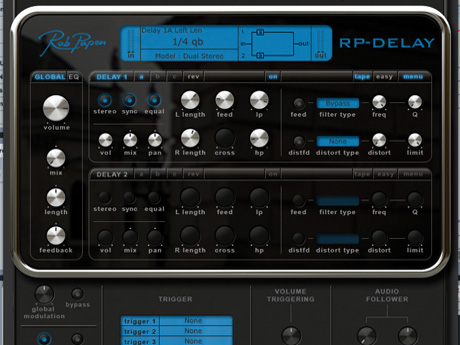
Delay makes a great reverb subsitute (or adjunct) as, unlike reverb, it needs not completely fill out your mix.
66
Reverb is a great tool for giving extra space and width to vocals, but it can also be a very dominating effect. As an alternative option, try some subtle delay. The key to not overpowering your vocal is to ensure that the delays are EQ'd - if your delay doesn't have EQ, put it on a bus and apply some EQ from there. A little bit of top- and bottom-end cut will thin it out and sound like reverb, but without the muddying tail.
67
Don't just use sidechaining to help your vocal pop through. If you have a musical part (say a piano or guitar) that's playing the same notes as the vocal, try using a sidechain gate on your vocal, taking its input from the musical part, to chop your vocal with the music. It's like our layering suggestion, only more obvious and extreme.
68
When you are making a vocal track, make sure the vocal comes to the fore and is the most prominent part of the mix - this usually means a certain amount of level. Singers always want their vocals louder, while the producer is often focused on the music. The genius is usually somewhere in the middle. Listen to other songs on your studio speakers and we reckon you'll be surprised just how loud the vocals are in most of them.
69
If you don't have a vocalist but want to get used to working with vocals, try experimenting with acappellas. It will give you some pointers about recording good vocals, even if only through observation, and it will definitely teach you a lot about placing vocals and making the most of what you have.
70
Timing is everything. If your vocal lacks energy, try applying a little pre-delay to it. Or better yet, chop up your vocal and add delay or pre-delay to certain parts, to create a tailored groove. And try using a bigger amount than with percussion - generally 1 to 3ms will be very noticeable with drums, but with vocals, you're going to need to hit about 3 to 5ms or more to even notice the difference.
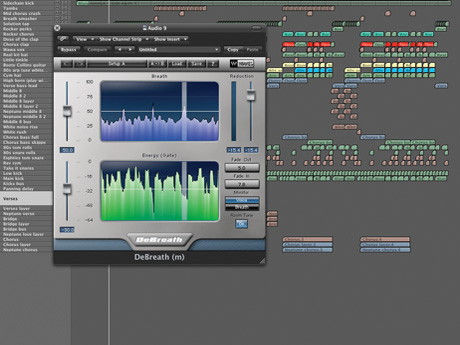
De-breathing plug-ins are a great quick fix, but manually editing the breaths can be much more effective and creative.
71
De-breathing plug-ins can be fantastic for reducing the overall level of breath noise, but for real punch and effect, it's worth chopping your vocal parts manually, taking out certain breaths or finishing words in a more clipped way. Fit your vocal to the melody and groove of the music.
72
We often talk about using sidechain pumping on a bassline to give it groove and fit it into the mix better, and the same thing can be done with a vocal part. How much bounce you add depends entirely on the track and the vocal, but even when used subtly, it can pull a vocal right into the track without it disappearing into the mix entirely.
73
You might want to try using glitch effects on certain parts of a vocal for emphasis. There are a couple of ways to do this. Sometimes we like to simply bounce a version of our vocal with our mangling plug-in of choice and use the parts that work; other times we automate the wet/dry balance. Either way, it's often also worth trying to mix some of the original signal over the results.
74
If you have four versions of the same chorus line, try taking the last two, layering them under the first two and then repeating both for the second half of eight bars. Not only will this generate a nice chorusing effect, but it will also create a subtle repeating variation, giving the listener something to latch onto and keeping them from feeling like things are on a static loop.
75
As we've said before, you should always get three takes of a vocal. Try offsetting your third vocal in relation to the main vocal, perhaps a half-bar or a bar later. Now let the vocals play all the way through and wherever the extra vocal sounds great filling in the gaps, leave it in. Then just strip out all the other parts you aren't using.

Dropping your sidechain kick on a vocal can help certain words or phrases stand out, particularly with chopped vocals.
76
If you are using ducking on your vocal, try taking the sidechain off for key phrases to help the vocal stand out (if it's set up properly you can make it get louder when the sidechain kick is removed). This can be particularly useful when you have some rhythmically chopped vocals, or harmonies that are bouncing off each other.
77
Vocals have a lot of messy frequencies in them, particularly if you've recorded them yourself. Get used to trimming out all the bottom end you don't need with EQ. Just be sure not to take the weight out of the voice. You want it to sound natural, but not like the deep, soothing baritone-style vocal you get on talk radio.
78
Rather than boosting your vocal with EQ to make it pop through the mix, try cutting out some of the corresponding frequencies in the competing parts (guitars and synths are the usual culprits). We can't stress enough that boosting should be done in moderation to add a little edge - cut should always be your first port of call when trouble-shooting frequency issues.
79
As you'll no doubt be aware, recording and comping vocals can be a pretty messy and confusing business on the screen. For this reason it's always a good idea to bounce down an instrumental track and place it in a fresh project before you start. This makes recording easier and more responsive (no latency or glitching) and makes it far easier to comp the vocals, ready to import into your actual project file.
80
Parallel compression can work really well with vocals. It preserves the natural rhythm and expression, but still lets you fatten things up a little. Or if you have two layered vocals, try compressing one of them heavily, while leaving the other quite natural.
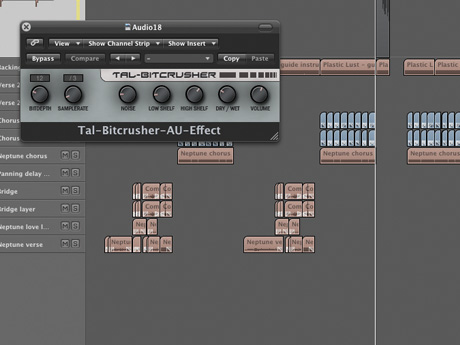
Bit-crushing plug-ins are ideal for adding presence and bite to any part of a mix, and vocals are no exception.
81
One way to give your vocal some sparkle and presence without having to add EQ (which can just add to the mess), is to use a bit-crushing plug-in such as the free TAL-Bitcrusher. Whether you apply this with extreme settings or just use a smidgen is up to you, as is whether you apply it to a solo vocal line, layer or entire group.
82
If you have a multiband compressor that allows an external sidechain, try making only some of the frequency range pump rhythmically. You can preserve the top end of the vocal and still create the impression of pumping - this tends to keep vocals audible in the mix while giving things bounce.
83
Many vocalists find it easier to hit the right notes if they sing powerfully. If your singer is regularly missing notes, try asking them to sing with more force. Just remember that this will tire out their voice much faster, and none of the subsequent takes are likely to match the early ones, so it is generally best saved until towards the end of a session.
84
Reverb fills out a vocal section and can give it much more character and life, but it can also really obscure it. Try using a sidechain compressor on your vocal's reverb (or indeed any reverb bus) to duck the reverb while the vocals are sounding. You usually want pretty fast attack times, but try to get the release to open in time with your track.
85
When you are comping vocals, it's best to be decisive. If your sequencer offers automatic comping facilities, start by making a copy of a take, and then be utterly ruthless. Don't worry about what you might need later - just get stuff you're happy with. If you find a line missing, you always have the back-up, and if you can't get it resung, you can slather on the processing to disguise the flaws!

Improve the presence of your vocal by centring any lower frequencies with an application like Sonalksis' StereoTools.
86
If you have a stereo enhancing tool with the ability to centre frequencies below a certain point, try adding an artificial stereo widener to your vocal and following it with a stereo enhancer plug-in, then setting the crossover to about 1kHz. You're aiming to keep the vocal centred and weighty, but also adding a little width to the space at the top end.
87
It sounds obvious, but make sure your singer is singing in their ideal range. If you've already made a track and they've come in to do a vocal on it, and the vocal is good but the range is a strain, try shifting the key of the track. These days this is usually easy to do (unless your track was played and recorded live), and often it can transform a track even before you've put the vocal in.
88
When you have two layered vocals, you can add some stereo spread and excitement by adding a tremolo or other rhythmic panning tool to one of the layers. Make sure it's lower in the mix, to keep things grounded, and try thinning the panned sound out a little with some EQ to make sure the track stays centred.
89
In most cases you want your vocal nicely panned, but sometimes, when the lyrics are recounting (or actually are) a conversation, it can be a good idea to pan the alternating lines from one side to the other. For an absolutely exquisite example of this, have a listen to Level by The Raconteurs, Jack White's superlative-defying side project.
90
Reverse and gated reverb are usually used on drums, but with the right timings they can add enormous impact to a vocal. You generally don't want them running all the way through a track, but judicious use can transform a lonely-sounding vocal.

Chorus and doubling effects can be used on backing vocals without taking away too much punch and presence.
91
Doubler and chorus effects are great for thickening vocals, but they also take away from the punch. Try using them on a bus or on one of two layers to ensure that at least one part of the vocal is strong and dominant. The same goes for phasing and flanging. Keep the levels on the dry side to start with, then raise them slowly during the final mix session.
92
A powerful vocal, suddenly removed, can leave a perceived empty space in the busiest of tracks. Set up a delay bus and send some of your vocal channel to it over the course of the last line before the vocal drops out, and let the delays ease the vocals out gently. Using a panner or some kind of pitch modulating effect (such as Audio Damage's Discord 3) will add further interest.
93
Sometimes a live vocal performance can sound amazing, but once you record it, you're stuck with it. To get a similar effect on a studio-recorded vocal, play it back through some speakers, then record that playback and layer it underneath your original. Since this is almost exactly what happens with live feedback, the result will be strikingly similar.
94
For some real bite on your vocals, you can't beat a bit of distortion, and almost every DAW now comes with some kind of guitar pedal and amp simulator, so make use of them. The trick, as ever, is to strike the right balance between bite and intelligibility - unless you just want a mangled vocal, in which case, go for your life!
95
Whenever you are making a track with vocals, it automatically becomes a 'song', and when producing songs, it's almost always a good idea to start with the radio edit. This flies in the face of many electronic producers' instincts, but it is much easier to spin out a good club cut from a radio edit than working the other way around. More importantly, it helps you concentrate on the power of your vocal.
96
All these tips are guidelines, and there's no need to think that you should apply all, or any, of them on every occasion. Rules are there for a reason, but they are made to be broken, and at least half the pearls of wisdom here were discovered by accident - indeed, many of them were heresy when they first arrived on the scene.
Don't be afraid to ignore all of our advice if you think your stuff sounds great - just make sure it sounds great to other people too!